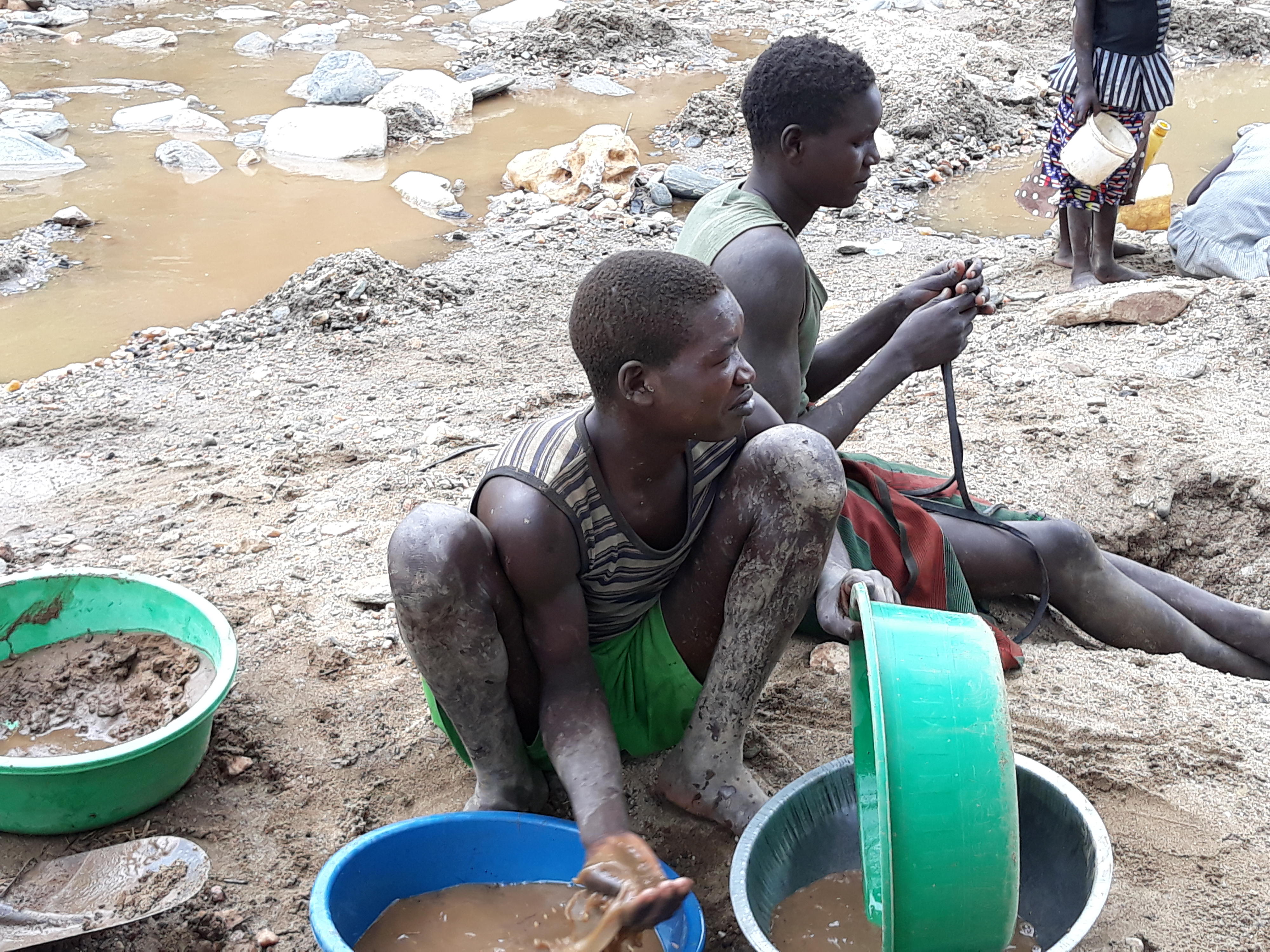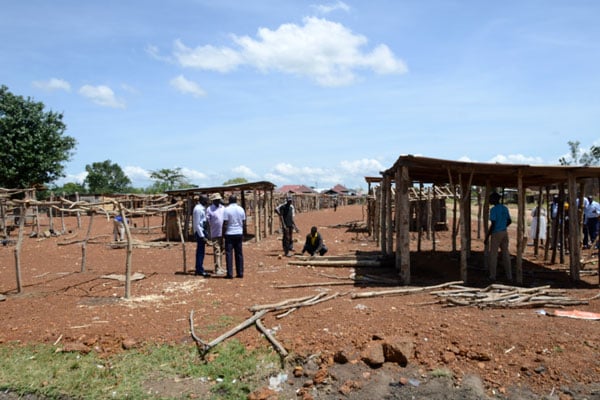Small-scale gold miners make big impact

Youth from Karamoja Sub-region extract gold in Moroto District. PHOTO/ HALIMA ABDALLAH
What you need to know:
- Currently, the ASMs are constrained by access to mineral rights, credit, technology, access to geological data and conflict with large scale operators.
- Currently, the ASMs are constrained by access to mineral rights, credit, technology, access to geological data and conflict with large scale operators.
- Building minerals generate on average of Shs1.3 trillion to artisanal small scale mining, Department of Geological Survey and Mines indicates.
Two youths split rocks with hammers. Two others roll a machine that mills the ore into fine dust. The dust is later on filled into cyanidation tanks and leached - a process involved in gold extraction.
The youths are artisanal miners from Tanzania. They left their country in search of a livelihood following a shutdown of all mining activities in 2017.
The halt in mining operations enabled Tanzania to review its mining legal system with improved national benefits from the resources.
Under the new law, Tanzania owns 16 per cent shares in all mineral rights and shares profits at 50 per cent with licensed companies after deduction of expenses.
Tanzania’s temporal halt coincided with Uganda’s mineral rush like one in Busia - a border district with Kenya, which is attracting immigrant artisanal miners, mineral dealers and mining corporations across the region.
Gold is one of the most sought for mineral commodities by miners because of ready market and easy processing.
“There is a gold boom in this country and miners from around the region are coming into Uganda. Tanzanians are coming as technical persons,” Mr Robert Wanyama, the officer-in-charge of laboratory and solutions at Sama Processing Plant (SPP) in Busia, said.
Sama processing plant is one of a few organised small scale mining companies. It recycles tailings-remains of soil after initial gold extraction to retrieve extra gold that previously was discarded into river systems as waste.
The process uses water, mercury and cyanide in a controlled setting to avoid environmental and health hazards associated with the chemicals.
The Tanzanians introduced the technology that has seen miners increase production from what was waste by 2-3 kg of gold annually.
Returns
At a current market price of $1,600 (about Shs6m) per gramme, it means that the miners have an additional $1.6 million (about Shs6b) per kilogramme added into their bank accounts.
“Before the Tanzanians came, we did not know what to do with heaps of soil after extracting gold for the first time. But now we have stiff competition for tailings, there are no tailings dumped at the rivers banks because they have value. Even after this processing, we shall shore the tailings for future use,” Mr Wanyama said.
“It is virtually indestructible, nearly all the gold ever mined is theoretically still accessible in one form or another and potentially available for recycling,” said the World Gold Council in a statement. Most Ugandan miners wash gold using plastic basins- manually. This processing makes them come into direct contact with the chemicals, with potential impact on their health.
Additionally, the water contaminates other sources such as rivers and swamps.
Both ASMs and large scale miners (LSMs) are involved in iron ore, tungsten, tantalum, coltan, limestone, salt, kaolin, Bentonite, Kaolin, limestone, gypsum and development minerals (building materials).
Building minerals, for example, generate on average $350m (Shs1.3 trillion)to ASMs, DGSM indicates. DGSM data shows that 95 per cent of ASM are unlicensed, but pay fees to local governments and land owners.
Majority ASMs prefer gold owing to the ease of extraction and processing the ore to the final gold resource.
A Daily Monitor research in mineral rich districts of Moroto and Busia and Mubende reveals that immigrant miners from DR Congo, Kenya, Rwanda, Burundi and Tanzania are also earning a living from the same resources.
Until recently, sources said the Turkana from Kenya are also doing small scale mining in Busia.
“Even in Tanzania, there are jobless people, so these came to look for jobs. Their skills are important because they have taught us how to use tanks,” Mr Hassan Odima, the SPP proprietor, said.
The Turkana come as traders in Karamoja Sub-region, selling garments, but later engage in mining after selling their merchandise.
The ones in Tapac are engaged in limestone extraction that is hewed for Tororo Cement. At the time of Daily Monitor’s visit, the Kenyan Turkana had returned home because of conflict between miners and the company over low pay. Normal operations have since resumed.
This group of cattle keepers crosses into Uganda in search of pasture and water for their livestock and food for their families. It is cheaper to buy food in Karamoja than it is in Turkana land.
Uganda is amending the mining law of 2003 to legalise operations of ASMs currently deemed ‘illegal’. The amendment will make ASM a preserve for nationals only. They will be issued with location licences and will be allowed to trade legally with LSM companies.
Most foreigners are aware of their questionable legal status and tend to avoid authorities. When Daily Monitor visited SPP, for example, the youthful Tanzanians pretended to pick a chair and vanished through the backdoor.
The proposed amendment is expected to make it mandatory for miners to own National Identity cards before they acquire licences.
The DGSM anticipates that well organised ASMs have potential to increase annual contribution to GDP by more than 3 per cent.
Currently, the ASMs are constrained by access to mineral rights, credit, technology, access to geological data and conflict with large scale operators.
Sanyonja Artisanal Miners Alliance (SAMA) in Tiira, Busia, is a small scale mining operation that has collaboration with Tanzania’s Nyarugusu and Gaita mines.
Origin of gold mining in Uganda
Uganda first experienced mineral rush in 1926 when copper was discovered in Kasese District, followed by gold discoveries in Buhweju in 1939. However, mining expeditions started back in history by natives. Around 1919, colonialists started extensive exploration for vast mineral resources around the country.
The mining sector thrived between 1955 and 1976 for the copper that saw construction of a railway line to Kasese and the associated infrastructure, which spurred economic growth of the country.
At the time, the mining sector contributed about 30 per cent of Growth Domestic Product. Political turbulence since the 1970s has brought the industry to a standstill and today as it picks up the pieces, the sector’s contribution to GDP is a paltry 0.3 per cent, far below the target of 7 per cent by 2020, according to National Development Plan II.
The unrest opened space for artisanal small scale mining (ASM) activities that thrive today. Official data from the Department of Geological Survey and Mines (DGSM) shows that 800,000 ASMs are employed directly while 2.5 million people are indirectly employed in Uganda’s ASMs.
There are more than 400 mineral rights given to different companies in exploration, retention or mining leases. The International Labour Organisation (ILO) indicates that in recent years, ASMs accounted for 15–20 per cent of the world’s non-fuel mineral production.




